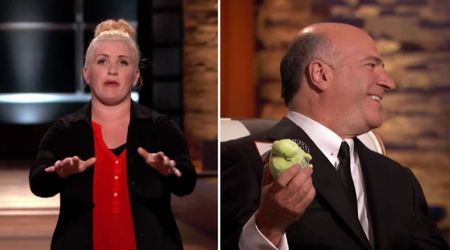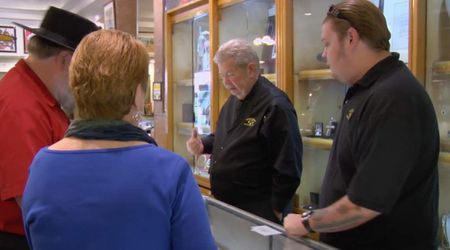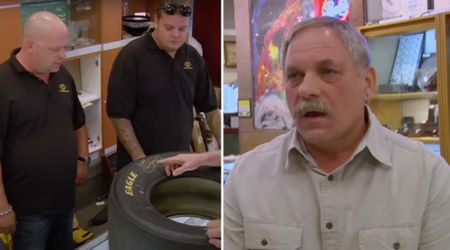How De-Influencing is Turning the Tables on Influencer Culture That Promotes Overconsumption

Influencers are enjoying increased visibility as they are seen doling out life hacks, endorsing brands and even attending important events alongside A-list celebs. But while life as an influencer may seem glamorous, it can get exhausting when one is constantly thinking about likes and subscribers. Diana Wiebe (@depressiondotgov) found herself spending a lot of time on TikTok and Instagram during the pandemic. She became aware that she was overspending and purchasing a large number of skincare products based on suggestions from influencers. She decided that something had to change as a result.
Although influencers have been having a blast, a new movement known as de-influencing is beginning to take shape. It could benefit the environment and is a reaction to the overwhelming effect of advertising on social media.

The Emergence of De-influencing
Influencers produce videos and other content in which they endorse these goods and services. To sweeten the pot, they frequently even provide their fans with a coupon code.
"They do it in a way that feels like they're your friend or relatable," Wiebe said. With time, this habit has changed to include fads like "Come shopping with me," which imitates the informal atmosphere of going shopping with friends. Influencers record videos of themselves shopping and selecting outfits, cosmetics, adorable ramen noodle dishes, and even Stanley cups.
"They show their hands tossing things into the cart without much thought," Wiebe said. "I kept thinking, 'Why are they buying all this stuff? It seems unnecessary."

The Evolution of De-influencing
Wiebe decided to post videos that are all about de-influencing, which means encouraging people to buy fewer things and utilize their existing possessions more effectively. Her #deinfluencing has garnered 1.5 billion views on TikTok in recent years.
Content creator Christina Mychaskiw stated, "At first, I saw this trend as a response to influencer fatigue, where there's this constant pressure to buy, buy, buy." Mychaskiw claims to have been a shopaholic in the past and to have owed more than $120,000 on college loans. She started creating films about mindful spending and consumer culture on TikTok even before the term "de-influencing" gained popularity.

Mychaskiw clarified that she had grown up watching videos that normalized excessive consumption. Videos are similar to "shopping hauls," in which individuals display hundreds of products they purchase all at once. "When you see those things repeatedly and people keep showing off what they've bought, it can make you feel like you need to do the same," she said.
"It's refreshing to see someone say, 'Hey, this thing didn't change my life. It didn't work like it was supposed to. It didn't live up to the hype. Save your money.'"
@christina.mychas Before buying that thing you JUST saw, shop your closet first. #shopyourcloset #mindfulspending #recreatingpinterestphotos #slowfashion #lowbuy #capsulewardrobestyle #deinfluencing ♬ La vie en rose (Cover Edith Piaf) - 田东昱
Heidi Kaluza's Transition
Heidi Kaluza used to be an influencer but now supports de-influencing. When she started, clothing brands would send her up to 20 items a month, but she felt pressured to give positive reviews even when she didn't genuinely like the products. Now, she sees de-influencing as a growing movement and believes it will become a foundational aspect of our society.
The Environmental Focus
De-influencing has shifted from simply reacting to mass advertising to discussing overconsumption more deeply, with a focus on its impact on the environment. Today's de-influencers are spreading a message about sustainable living online, highlighting issues like plastic packaging, excessive shipping, and the environmental harm caused by discarded products.
The conversation about consumer goods and quick fashion serves as an entry point. People may at first think it's just about a garment, but as they learn more, they start to see bigger-picture problems. They may eventually discover that they are embracing eco-friendly habits like composting.
Solitaire Townsend's Insights
"Now, it's not just about de-influencing; it's about using your influence for good," sustainability specialist Solitaire Townsend, a co-founder of the change firm Futerra, said.
Townsend highlighted that to promote sustainable living, influencers are essential. People regard them as members of their inner circle and have faith in them. According to research conducted by Townsend's company in collaboration with Unilever, platforms like TikTok and Instagram are seen as valuable sources for sustainable living advice. Many people are inclined to adopt eco-friendly behaviours after engaging with social media content. "Influencers can set a positive example, and many of us want them to help us navigate sustainability," concluded Townsend.
You can follow Diana Wiebe here for more such videos.
@depressiondotgov Replying to @Sam Flint on this next installment of deinfluencer to influencer pipeline - I got my first ever PR box!!!! #deinfluencing #influencer #cats #catsoftiktok #prbox #garbage #prunboxing #unboxing #nails #aesthetic #beige ♬ original sound - DepressionDotGov




















